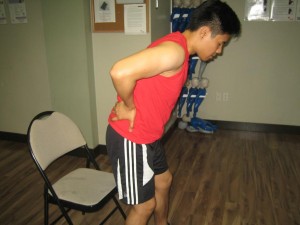The sacroiliac joint is found at the base on either side of the spine. It is a component of the rear part of the pelvic girdle. When it comes to sacroiliac joint dysfunction, it can either be less mobile or hypermobile.
This can lead to issues with the adjacent tissues such as the muscles and ligaments that results to a variety of symptoms in the lower back and buttocks. Sacroiliac joint pain arises from various causes – biomechanical, traumatic, hormonal and inflammatory joint disease.
What are the indications?

- It is important to note that sacroiliac joint pain is typically set either to the right or left of the inferior region of the back but some describe it as strip of pain all over the lower back.
- The pain can range from a minor ache to a piercing pain that limits movement. Sacroiliac joint pain can radiate into the buttocks and lower back and often to the groin and even the testes.
- There is also stiffness or rigidity in the lower back after getting up from a seated position for long hours and getting up from bed in the morning.
Management of sacroiliac joint pain
An individual suffering from sacroiliac joint pain should get enough rest from contributing activities especially running. A sacroiliac support belt is often used to relieve the strain from the joint and relieve the symptoms. It also works by applying compression around the hip and over the joint as well as protection from further injury.
In case there is muscle spasm around the area, a heat pack is used to allow the muscles to relax. Avoid using heat for acute inflammation since it will only worsen it. In such cases, cold therapy is more effective. Anti-inflammatory medications might be prescribed by the doctor to minimize the inflammation and allow the muscles to relax.
In some cases, electrotherapy such as ultrasound might be utilized to treat the soft tissues. If indicated and safe, the pelvis is leveled via joint manipulation and mobilization. Additionally, sports massage can alleviate any tension in the soft tissues in the area.
Quick Note / Disclaimer
The material posted on this page on sacroiliac joint pain is for learning and educational purposes only. To learn to recognize and manage joint injuries and conditions, register for a first aid and CPR course with Saskatoon First Aid.
